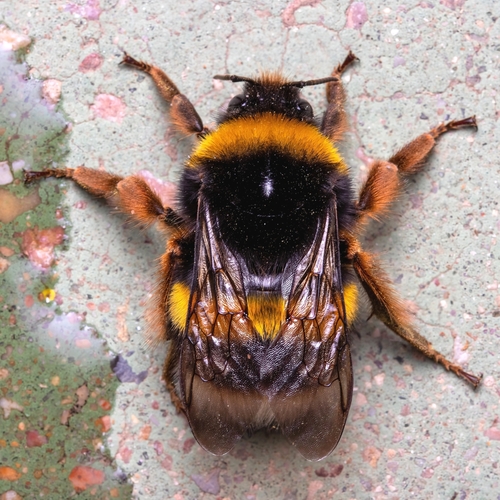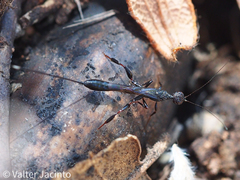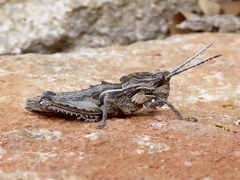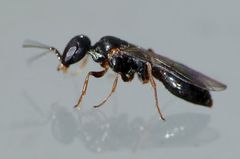Lusitanian bumblebee
Bombus terrestris lusitanicus
Bombus terrestris lusitanicus, commonly known as the Iberian bumblebee, is a subspecies of the bumblebee found prevalently in the Iberian Peninsula, including the Comunidad Valenciana. It plays a crucial role in the pollination of various plant species, making it an essential component of the region's ecosystem.
This bumblebee is recognizable by its robust and furry body, characterized by distinctive black and yellow bands. It typically has a white tip at the rear of its abdomen, distinguishing it from other bumblebee species. The Bombus terrestris lusitanicus is generally larger than many other bee species, contributing to its effectiveness in pollination.
The Bombus terrestris lusitanicus is known for its adaptability to different environments, thriving in both rural and urban areas in the Comunidad Valenciana. It is commonly spotted in gardens, parks, and natural reserves, where it feeds on nectar from a variety of flowering plants.
- Habitat: Prefers temperate climates and is often found in coastal and inland areas.
- Diet: Primarily nectar and pollen from flowers such as those from the daisy family (Asteraceae) and legumes (Fabaceae).
- Lifecycle: Like other bumblebees, it goes through a lifecycle including the stages of egg, larva, pupa, and adult, with colonies that last for several months during the warmer seasons.
- Importance: It is vital for the pollination of both wild and cultivated plants, supporting biodiversity and agriculture in the region.
Efforts to conserve the Bombus terrestris lusitanicus focus on maintaining healthy habitats and minimizing threats from pesticides and habitat loss. Observing these bees can provide insights into the health of local ecosystems.







